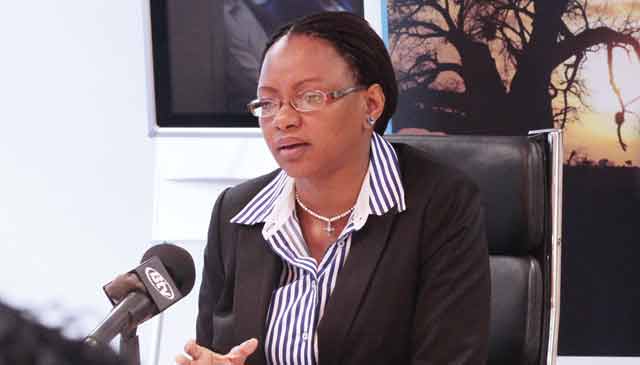Barclays Bank Botswana appears to be failing to plug its losses and reverse its spiraling income, as the bank once again recorded a six percent decline in total income during H1: 2014. When presenting the bank’s half year financial results for the period ended 30 June 2014, Barclays Finance Director Lipalesa Makepe said the fall in revenue is a direct result of the prevailing depressed interest rate environment.
“Our half year performance is a reflection of the current low interest rate environment which has impacted our interest income business at a time of continued investment activity being undertaken to transform the business and edge us forward,” she said.
Barclays’ total income decreased by six percent to P608m while profit after tax (PAT) went down 35 percent. However, Makepe said the low earnings should not overshadow the positive gains that the bank recorded in H1:2014, particularly a 17 percent increase in loans and advances.
“With low earnings, it is easy to ignore the positive gains realized in this half year, importantly the progress we made in growing loans and advances by 17 percent,” she said.
In an interview on the sides of the results presentation, Makepe told Gazette Business that the growth in loans and advances was spurred by mortgages and group scheme lending, which contributed 8 percent. While Barclays’ play in this space grew considerably, Makepe was quick to emphasize that the bank is selective in its lending because of tight margins and constrained consumer incomes.
“In the reporting period we achieved a 17 percent growth in customer assets, 70 percent of which was in corporate banking, which reflects our commitment to supporting our corporate customers’ regional growth ambitions, in line our One Africa strategy,” said Makepe.
She further revealed that the bank wants to satisfy the varied needs of its customers by offering a more complete package which offers loans and products for businesses, car purchases and personal loans. Barclays’ operating costs increased by 10 percent to P347m, which is reflective of the investment that is being made to transform it into the “Go-To” bank in Botswana. Increased spending on training and system enhancements also shot up the banks’ administrative costs.
“These are intended to support new product and service offerings to be rolled out progressively in this year and beyond,” said Makepe.
As part of efforts to finance its growth plans, Barclays has listed a new, updated and larger size medium term note (MTN) program from which it will issue bonds. Makepe explained to Gazette Business that MTN is a mix of debt and capital; hence its listing was not based on the need to comply with Basel II and Basel III capital requirements. She said that the bank is currently reviewing its financial structure to meet its capital needs under the proposed framework of Basel II and Basel III.
“The success indicator will be achieving efficiency on our balance sheet,” she said.
As at 30 June 2014, Barclays maintained a healthy capital position, with core capital ratio at 16.51 percent (2013: 20.61percent) and capital adequacy ratio at 18.06percent (2013: 22.71percent). Responding to Gazette Business questions, Karabo Tladi, analyst at Blackthread Capital, downplayed the decline in the bank’s income, saying it will not have any significant impact on the bond interest rate that will be paid to investors.
“Despite the recent decline in income over the past two years, Barclays remains a fundamentally strong business, with a strong brand and a sustainable competitive advantage,” he said.

